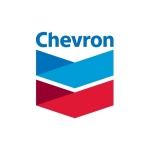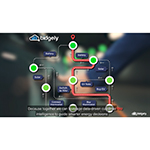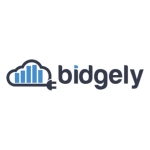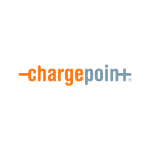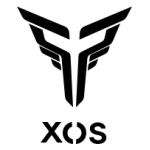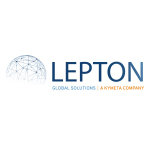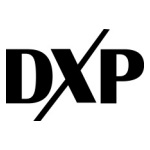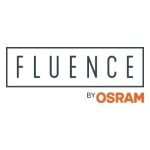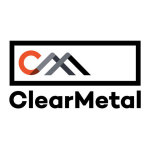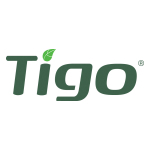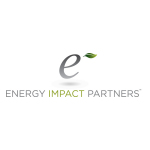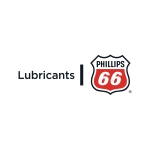Q4 2020 Highlights:
- Revenues of $149.9 million
- Net income of $4.6 million
- Earnings per share of $0.09
- Consolidated adjusted EBITDA of $16.1 million
- Bookings of $167 million

Full Year 2020 Highlights:
- Revenues of $566.3 million
- Net income of $(10.3) million
- Earnings per share of $(0.21)
- Consolidated adjusted EBITDA of $45.1 million
- Bookings of $645 million
- Backlog at December 31, 2020 of $535.0 million, a 21.3% increase compared to December 31, 2019
- Minimum required pension funding contributions reduced by $107 million or 75%
AKRON, Ohio--(BUSINESS WIRE)--$BW #BabcockWilcox--Babcock & Wilcox Enterprises, Inc. ("B&W" or the "Company") (NYSE: BW) announced results for the fourth quarter and full year 2020.
"Our results for the fourth quarter and full year 2020 reflect the ongoing positive impact of our strategic actions, cost savings initiatives, and strong management and operational effectiveness, despite the impacts of COVID-19 across our segments, and we are confident in our ability to achieve our previously stated adjusted EBITDA targets of $70-$80 million and $95-$105 million, in 2021 and 2022, respectively1," said Kenneth Young, B&W's Chairman and Chief Executive Officer. "Our actions in 2020 and year-to-date, which included launching new segments, expanding internationally, implementing additional cost savings initiatives, and most recently closing successful common stock and senior notes offerings, have provided a strong foundation for the continued execution of our growth strategy.
"The proceeds from our offerings significantly reduced our secured debt by $274 million and reduced future cash interest payments by approximately $16 million annually. Combined with a reduction in our required pension contributions, we expect to save more than $40 million annually in cash expenses on a pro-forma basis, while also providing capital to support the expansion of our clean energy technologies portfolio as we continue to pursue more than $5 billion of identified pipeline opportunities over the next three years, in addition to our high-margin parts and services business," Young continued. "Looking forward, we remain focused on growing our B&W Renewable and B&W Environmental segments, including deploying our waste-to-energy and carbon capture technologies to help meet the increasing global demand for carbon and methane reductions. The next-generation B&W is positioned to power the global energy and environmental transformation."
| 1 The most comparable GAAP financial measure is not available without unreasonable effort. |
Q4 2020 Financial Summary
Consolidated revenues in the fourth quarter of 2020 were $149.9 million, down 17% compared to the fourth quarter of 2019. Revenues in all segments were adversely impacted by COVID-19 as customers delayed projects and travel restrictions limited the ability of the Company's workforce to be on site. The completion of large projects in all three segments in the prior year quarter also contributed to the decline in revenue. The GAAP operating income in the fourth quarter of 2020 was $2.2 million, inclusive of restructuring and settlement costs and advisory fees of $7.9 million, compared to an operating income of $10.0 million in the fourth quarter of 2019. The decline in operating income was primarily due to lower volume as a result of the impacts of COVID-19, partially offset by the effects of improved gross margin in the B&W Thermal segment. Adjusted EBITDA was $16.1 million compared to $22.8 million in the fourth quarter of 2019. Bookings in the fourth quarter of 2020 were $167 million. All amounts referred to in this release are on a continuing operations basis, unless otherwise noted. Reconciliations of net income, the most directly comparable GAAP measure, to adjusted EBITDA, as well as to adjusted gross profit for the Company's segments, are provided in the exhibits to this release.
Babcock & Wilcox Renewable segment revenues were $37.6 million for the fourth quarter of 2020, compared to $46.7 million in the fourth quarter of 2019. The decline in revenue was primarily due to the completion of the European EPC loss projects in 2019 and the negative impacts of COVID-19 on projects and parts sales. Adjusted EBITDA in the quarter was $3.0 million compared to $5.8 million in the fourth quarter of 2019, primarily due to the lower volume. In the fourth quarter of 2020, the segment recorded losses of $2.4 million on the European EPC loss contracts as compared to a gain of $1.2 million in the fourth quarter of 2019, inclusive of warranty expense. The segment adjusted gross profit was $10.4 million in the fourth quarter of 2020 compared to adjusted gross profit of $10.7 million reported in the fourth quarter of 2019; despite COVID-19's impact on revenue, the gross profit margin improved to 27.7% in the fourth quarter of 2020, compared to 22.9% in the fourth quarter of 2019 as a result of emphasis on higher margin projects and cost savings initiatives.
Babcock & Wilcox Environmental segment revenues were $31.6 million in the fourth quarter of 2020, compared to $41.2 million in the fourth quarter of 2019, primarily due to the impacts of COVID-19 and the completion of a large submerged grind conveyor project and a large construction project in the prior year quarter. Adjusted EBITDA was $2.4 million, compared to $6.3 million in the same period last year, driven by the lower volume. Adjusted gross profit was $6.9 million in the fourth quarter of 2020, compared to $11.2 million in the prior-year period.
Babcock & Wilcox Thermal segment revenues were $81.0 million in the fourth quarter of 2020 compared to $94.2 million in the prior-year period, primarily due to the impacts of COVID-19 and the completion of a large maintenance project in the prior-year quarter. Adjusted EBITDA in the fourth quarter of 2020 was $12.8 million, an increase of 6.9% compared to $11.9 million in last year's quarter, primarily due to favorable product mix and the benefits of a full period of cost savings and restructuring initiatives, partially offset by the effects of lower volume and increases in overhead being allocated to the segment; adjusted EBITDA margin was 15.7% in the quarter compared to 12.7% in the same period last year. Adjusted gross profit in the Babcock & Wilcox Thermal segment in the fourth quarter of 2020 improved to $27.4 million, a 6.8% increase compared to $25.6 million in the prior-year period, primarily due to favorable product mix and the benefits of a full period of cost savings and restructuring initiatives, offset by lower volume; gross profit margin improved to 33.8%, compared to 27.2% in the same period last year.
Full Year 2020 Financial Summary
Consolidated revenues in 2020 were $566.3 million, down 34% compared to 2019. Revenues in all segments were adversely impacted by COVID-19, including the postponement and delay of several projects. The GAAP operating loss in 2020 was $1.7 million, inclusive of an insurance loss recovery of $26.0 million offset by restructuring and settlement costs and advisory fees of $24.7 million, compared to an operating loss of $29.4 million in 2019. The improvement in operating loss was primarily due to the insurance loss recovery, the positive impact of cost savings initiatives and a lower level of losses on the EPC loss contracts, partially offset by the divestiture of Loibl and the impacts of COVID-19 on revenue in all three segments. Adjusted EBITDA improved to $45.1 million compared to $45.0 million in 2019. Total bookings in 2020 were $645.0 million, and backlog at December 31, 2020 was $535.0 million, a 21.3% increase compared to December 31, 2019.
Babcock & Wilcox Renewable segment revenues were $156.2 million in 2020, a decrease of 24.0% compared to $205.6 million in 2019, primarily due to the advanced completion of activities on the European EPC loss contracts in the prior year as well as new anticipated projects and parts orders being deferred due to COVID-19 and the divestiture of Loibl, a materials handling business in Germany that generated revenues of approximately $14.3 million in 2019, partially offset by a higher level of activities on two operations and maintenance contracts in the U.K. which followed the turnover of the EPC loss contracts to the customers. Adjusted EBITDA improved to $25.0 million compared to $1.6 million in the prior year, primarily due to the loss recovery of $26.0 million recognized in 2020 under an October 10, 2020 settlement agreement with an insurer in connection with five of the six European EPC loss contracts, as well as lower costs related to the loss contracts. In 2020, the segment recorded $3.7 million in net losses as compared to $6.9 million of equivalent losses recorded in 2019, inclusive of warranty expense. The Adjusted EBITDA improvement was also partially offset by the divestiture of Loibl and lower volume, as described above. The segment adjusted gross profit was $58.8 million in 2020, an improvement of $28.8 million compared to $30.0 million in 2019.
Babcock & Wilcox Environmental segment revenues were $108.0 million in 2020, a decrease of 60.8% compared to $275.6 million in 2019, primarily due to the completion of large construction projects in 2019 and a lower level of activity due to the postponement of new projects by several customers as a result of COVID-19. Adjusted EBITDA declined to $3.5 million compared to $12.5 million in the prior year, primarily attributable to the impacts of lower volume, partially offset by a lower percentage of overhead being allocated to the segment. Adjusted gross profit was $23.5 million in 2020, compared to $48.4 million in the prior year. At December 31, 2020, the B&W Environmental segment had two significant loss contracts, with net losses of $1.3 million and $5.6 million in 2020 and 2019, respectively. As of December 31, 2020, the first contract was approximately 100% complete with only warranty obligations remaining and the second contract was approximately 99% complete with final completion expected in the first quarter of 2021.
Babcock & Wilcox Thermal segment revenues were $305.0 million in 2020, a decrease of 25.6% compared to $409.7 million in the prior year, primarily due to the adverse impacts of COVID-19 resulting in lower parts, construction, package boilers and international service orders, as well as the completion of large construction projects in the prior year. Adjusted EBITDA in 2020 declined to $35.4 million compared to $51.4 million in the prior year, primarily due to lower volume and a higher percentage of overhead being allocated to the segment that was previously allocated to other segments, partially offset by favorable product mix and a full period of cost savings and restructuring initiatives benefiting 2020; adjusted EBITDA margin was 11.6% for the year compared to 12.5% in 2019. Gross profit margin in the segment was 29.9% in 2020, compared to 22.3% in the prior year; adjusted gross profit in the segment in 2020 was $91.2 million, which was flat compared to the prior year primarily due to favorable product mix and the effects of a full period of cost savings and restructuring initiatives benefiting 2020, offset by lower volume.
COVID-19 Impact
The global COVID-19 pandemic has disrupted business operations, trade, commerce, financial and credit markets, and daily life throughout the world. The Company's business has been, and continues to be, adversely impacted by the measures taken and restrictions imposed in the countries in which it operates and by local governments and others to control the spread of this virus. These measures and restrictions have varied widely and have been subject to significant changes from time to time depending on the changes in the severity of the virus in these countries and localities. These restrictions, including travel and curtailment of other activity, negatively impact the Company's ability to conduct business. The volatility and variability of the virus has limited the Company's ability to forecast the impact of the virus on its customers and its business. The continuing resurgence of COVID-19, including at least one new strain thereof, has resulted in the reimposition of certain restrictions and may lead to other restrictions being implemented in response to efforts to reduce the spread of the virus. These varying and changing events have caused many of the projects the Company had anticipated would begin in 2020 to be delayed into 2021 and beyond. Many customers and projects require B&W's employees to travel to customer and project worksites. Certain customers and significant projects are located in areas where travel restrictions have been imposed, certain customers have closed or reduced on-site activities, and timelines for completion of certain projects have, as noted above, been extended into 2021 and beyond. Additionally, out of concern for the Company's employees, even where restrictions permit employees to return to its offices and worksites, the Company has incurred additional costs to protect its employees as well as advising those who are uncomfortable returning to worksites due to the pandemic that they are not required to do so for an indefinite period of time. The resulting uncertainty concerning, among other things, the spread and economic impact of the virus has also caused significant volatility and, at times, illiquidity in global equity and credit markets. The full extent of the COVID-19 impact on the Company's operational and financial performance will depend on future developments, including the ultimate duration and spread of the pandemic and related actions taken by the U.S. government, state and local government officials, and international governments to prevent disease spread, as well as the availability and effectiveness of COVID-19 vaccinations in the U.S. and abroad, all of which are uncertain, out of the Company's control, and cannot be predicted.
Liquidity and Balance Sheet
At December 31, 2020, the Company had total debt of $347.6 million, an unrestricted cash balance of $57.3 million and borrowing availability of $33.7 million.
As previously disclosed, on February 12, 2021 the Company closed an underwritten public offering of 29,487,180 shares of common stock, which included 3,846,154 shares issued in connection with the underwriter’s option to purchase additional shares, at a price to the public of $5.85 per share, for gross proceeds of approximately $172.5 million. On February 12, 2021 the Company also closed an underwritten public offering of $125.0 million aggregate principal amount of 8.125% senior notes due 2026, which included $5 million aggregate principal amount of senior notes issued in connection with the underwriters’ option to purchase senior notes. Gross proceeds for both offerings are exclusive of underwriting discounts and commissions and estimated offering expenses payable by the Company.
In addition to the public offerings, B. Riley Financial, Inc. exchanged $35 million of its existing Tranche A term loan for $35 million principal amount of senior notes in a concurrent private offering, and the interest rate on the remaining Tranche A term loan balance was reduced to an interest rate of 6.625%, compared to its prior rate of 12%.
The two offerings resulted in net proceeds of approximately $283 million after deducting underwriting discounts and commissions, but before expenses.
On February 16, 2021, the Company prepaid $167.1 million towards the outstanding revolving credit facility, reducing the outstanding borrowing balance to zero.
On March 4, 2021, the Company amended its Credit Agreement to, among other things, reduce its revolving borrowing availability to zero and its letter of credit availability to $130 million. On March 4, 2021 the Company also paid $21.8 million of accrued and deferred bank fees and $75 million towards its existing Tranche A last out term loan.
Taking into account the effects of the above strategic actions, including the net proceeds of public offerings after underwriting discounts and commissions, but before expenses; prepayment of the revolving credit facility; and the partial paydown of the Tranche A term loan and the payment of bank fees, as well as deferred interest, amendment fees and estimated advisory fees; pro-forma total debt and unrestricted cash at December 31, 2020 would be $233.3 million and $72.5 million, respectively.
In addition, based on the performance of the Company's domestic qualified pension plan, the minimum required funding contributions through 2026 have been reduced by 75%, as previously disclosed. The current total minimum required funding contribution for the period 2021-2026 is $35 million, to be contributed in the next two years. This is $107 million less compared to the Company's previous expectation for the period from 2021-2026. These numbers are subject to change with the performance of the pension fund investments.
Cost Savings Measures Continuing
In addition to the $119 million of cost savings initiatives previously disclosed, the Company implemented approximately $8 million of additional cost savings initiatives in 2020, for a total of $127 million. The Company has also identified another $11 million of cost savings actions expected to be implemented beginning in the first quarter of 2021.
Earnings Call Information
B&W plans to host a conference call and webcast on Tuesday, March 9, 2021 at 8 a.m. ET to discuss the Company’s fourth quarter and full year 2020 results. The listen-only audio of the conference call will be broadcast live via the Internet on B&W’s Investor Relations site. The dial-in number for participants in the U.S. is (833) 227-5843; the dial-in number for participants outside the U.S. is (647) 689-4070. The conference ID for all participants is 5390408. A replay of this conference call will remain accessible in the investor relations section of the Company's website for a limited time.
Non-GAAP Financial Measures
The Company uses non-GAAP financial measures internally to evaluate its performance and in making financial and operational decisions. When viewed in conjunction with GAAP results and the accompanying reconciliation, the Company believes that its presentation of these measures provides investors with greater transparency and a greater understanding of factors affecting its financial condition and results of operations than GAAP measures alone. As previously disclosed, the Company changed its reportable segments in 2020 and has recast prior period results to account for this change. Additionally, the Company redefined its definition of adjusted EBITDA to eliminate the effects of certain items including the loss from a non-strategic business, interest on letters of credit included in cost of operations and loss on business held for sale. Prior period results have been revised to conform with the revised definition and present separate reconciling items in our reconciliation.
This release presents adjusted gross profit for each business segment and adjusted EBITDA, which are non-GAAP financial measures. Adjusted EBITDA on a consolidated basis is defined as the sum of the adjusted EBITDA for each of the segments, further adjusted for corporate allocations and research and development costs. At a segment level, the adjusted EBITDA presented is consistent with the way the Company's chief operating decision maker reviews the results of operations and makes strategic decisions about the business and is calculated as earnings before interest, tax, depreciation and amortization adjusted for items such as gains or losses on asset sales, mark to market ("MTM") pension adjustments, restructuring and spin costs, impairments, losses on debt extinguishment, costs related to financial consulting required under the U.S. Revolving Credit Facility and other costs that may not be directly controllable by segment management and are not allocated to the segment. The Company presented consolidated Adjusted EBITDA because it believes it is useful to investors to help facilitate comparisons of the ongoing, operating performance before corporate overhead and other expenses not attributable to the operating performance of the Company's revenue generating segments. This release also presents certain targets for our adjusted EBITDA in the future; these targets are not intended as guidance regarding how the Company believes the business will perform. The Company is unable to reconcile these targets to their GAAP counterparts without unreasonable effort and expense due to the aspirational nature of these targets.
This release also presents adjusted gross profit by segment. The Company believes that adjusted gross profit by segment is useful to investors to help facilitate comparisons of the ongoing, operating performance of the segments by excluding expenses related to, among other things, activities related to the spin-off, activities related to various restructuring activities the Company has undertaken, corporate overhead (such as SG&A expenses and research and development costs) and certain non-cash expenses such as intangible amortization and goodwill impairments that are not allocated by segment.
Forward-Looking Statements
This press release contains forward-looking statements within the meaning of the Private Securities Litigation Reform Act of 1995. All statements other than statements of historical or current fact included in the release are forward-looking statements. You should not place undue reliance on these statements. These forward-looking statements are based on management’s current expectations and involve a number of risks and uncertainties, including, among other things, the impact of COVID-19 on the Company, the capital markets and global economic climate generally; the Company’s recognition of any asset impairments as a result of any decline in the value of its assets or efforts to dispose of any assets in the future; the Company’s ability to obtain and maintain sufficient financing to provide liquidity to meet its business objectives, surety bonds, letters of credit and similar financing; the Company’s ability to comply with the requirements of, and to service the indebtedness under, the Company’s A&R Credit Agreement; the Company’s use of proceeds from its recent offerings of common stock and 8.125% senior notes due 2026; the highly competitive nature of the Company’s businesses and ability to win work, including identified project opportunities in the pipeline; general economic and business conditions, including changes in interest rates and currency exchange rates; cancellations of and adjustments to backlog and the resulting impact from using backlog as an indicator of future earnings; the Company’s ability to perform contracts on time and on budget, in accordance with the schedules and terms established by the applicable contracts with customers; failure by third-party subcontractors, partners or suppliers to perform their obligations on time and as specified; the Company’s ability to successfully resolve claims by vendors for goods and services provided and claims by customers for items under warranty; the Company’s ability to realize anticipated savings and operational benefits from its restructuring plans, and other cost-savings initiatives; the Company’s ability to successfully address productivity and schedule issues in its B&W Renewable, B&W Environmental and B&W Thermal segments, including the ability to complete its B&W Renewable's European EPC projects and B&W Environmental's U.
Contacts
Investor Contact:
Megan Wilson
Vice President, Corporate Development & Investor Relations
Babcock & Wilcox Enterprises
704.625.4944 | This email address is being protected from spambots. You need JavaScript enabled to view it.
Media Contact:
Ryan Cornell
Public Relations
Babcock & Wilcox Enterprises
330.860.1345 | This email address is being protected from spambots. You need JavaScript enabled to view it.
Read full story here 


